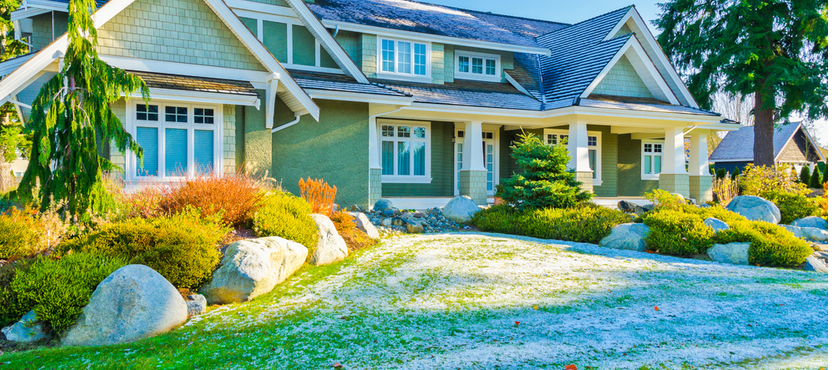New Florida residents often wonder why their lawn turns brown in the winter, after all most parts of Florida don’t typically experience cold weather. The truth is your lawn knows winter is approaching – the days get shorter, the sunlight hits lower levels of intensity, and the cooler temperatures signal lawns to grow slower. So, though cold weather in Florida is uncommon, your lawn still knows when winter is approaching and goes dormant. If you live in South Florida, your lawn may stay green, while still entering the winter state of dormancy. If your home is in Central or Northern Florida, the brown turf will signal the winter dormant period for you.
Even with the decreased growth rate of winter, your lawn still has needs. Winterizing your Florida turf will keep it healthy throughout the winter dormant stage and increase the chances of cooler weather damage, disease, or infestation. Performing the appropriate winter weather lawn care will also aid your lawns plush, green recovery in the coming spring.
Mowing in Winter
Because your grass is dormant in winter, with a slower growth rate, you won’t need to mow as frequently. While mowing your lawn to the appropriate height keeps it healthy all year long, in winter, you must take care to leave your lawn height a bit taller. Doing so, protects the lawns roots in the event of freezing weather (particularly in North and Central Florida). For the most common lawns, Bahia and St. Augustine grasses, the winter mowing heights should be between 3.5 and 4 inches. For all other Florida grasses, you should mow between 2 and 2.5 inches in winter.
Watering in Winter
Like mowing, your lawn will need less watering in winter, due to the state of dormancy. Because your grass is dormant in winter, water is not needed for growing like it is in summer. In addition, heat and sunlight are reduced, making evaporation less of a factor and scorching unlikely. For winter, your irrigation schedule should be one to two-week intervals. If you see footprints when you walk across the lawn, you know your lawn needs additional water.
Fertilizing in Winter
Often Florida residents feel they need to apply a round of fertilizer in winter, but this is not always the case. If you live in South Florida, your lawn may need fertilizer year-round if it is showing growth. In Central Florida, you shouldn’t apply fertilizer after October, and in North Florida, September is the final time to fertilize. You should use a low nitrogen and high potassium fertilizer for the fall in Florida. If you fertilize late, you could make your turf more cold-sensitive, because it is growing when colder temperatures arrive. If, on the other hand, you missed your fall application, simply apply fertilizer as soon as you see new growth in the spring.
A special note here, if you do experience a freeze and your lawn looks dead, never fear, the turf is simply behaving as other foliage does in cold weather. Trying to nurse it back to health with fertilizer will only do harm to your lawn. When spring arrives, it will encourage the roots out of dormancy nurturing your lawn back to lush beautiful green quickly.
Seeding in Winter
If you live in one of the regions in which your lawn turns brown in winter, over seeding may be the solution to keeping your lawn green all winter long. Over seeding is simply put, planting temporary grass for the winter. Rye grass is the ideal over seeding choice because of its rapid growth rate and low price. If you decide to try over seeding, remember sow it when the daytime temperatures are consistently in the low to mid 70s. Once you sow your seed, water frequently to aid germination. Once your winter lawn is growing strong, you’ll need to mow, water, and fertilize it during the season.
Call on the team at Xtreme Landscaping to help you keep your lawn healthy all year long, even in winter.

